State of Grocery Europe 2024: Signs of Hope

Although economic uncertainty will likely persist in 2024, grocery retailers could fuel profitable growth by future-proofing the assortment, driving efficiency savings, and monetizing retail media.
For the European grocery industry, 2023 was a challenging year. Inflation led consumers to tighten their belts, leading to a drop in volume and significant downtrading. As a result, industry growth was significantly below food price inflation. Food price inflation in Europe was 12.8 percent in 2023,1 while grocery sales grew at a rate of only 8.6 percent.2 Discounters and private labels benefited from this market environment and were yet again the winners of the year.
In 2024, we expect macroeconomic uncertainty to persist, but at the same time, our research indicates the first small signs of recovery. The pressure on margins, costs, and prices remains a key concern for grocery retail CEOs, but leaders are less pessimistic than they were in previous years. In addition, thanks to initial signs of economic recovery and wage increases in many countries, consumer confidence is returning. Still, our consumer research shows that recovery of consumer behavior is very polarized for 2024. While most consumer segments are still price sensitive and trading down, some segments show an increased appetite for uptrading and innovations.
2023: Again all about price
Grocery sales in Europe3 grew by 8.6 percent in 2023. This growth was a result of 12.8 percent food price inflation, a downtrading effect of 1.8 percent, and a 2.0 percent volume decline. This implies that grocery sales in real terms (that is, adjusted for inflation) declined again in 2023 and are now 4.5 percent below 2019 levels. This decrease from 2019 is driven by a small volume increase of 0.3 percent and a decline of the price per item in real terms by 4.8 percent.
While inflation eased significantly over the course of 2023, it was still the dominant factor affecting the industry. Overall inflation came down from a historic high of 10 percent in October 2022 to a stable 3 percent at the end of 2023. European food price inflation was even higher, reaching a 19.0 percent peak in March 2023 and an average of 12.8 percent for the full year. Producer prices in the European Union started to decline in early 2023, following agricultural prices with a delay of six months. Food prices for consumers saw minimal decline at the time, in part because grocery retailers’ price contracts with suppliers remain in effect and labor costs increased significantly.4
Real wages were compressed during 2022 and most of 2023. This has put severe pressure on many household budgets and curbed consumer purchasing power. Wage increases of 6.3 percent in the EU-27 in the second half of 2023 brought some relief for consumers, but not all countries returned to 2019 wage levels in real terms. For instance, real wages are still below 2019 levels in France, Germany, Italy, and the Netherlands. On average, real wages in the EU-27 were 1.2 percentage points below 2019 levels at the end of 2023.5
As a result, consumers traded down significantly in 2023, and private labels and discounters benefited. The private label share increased substantially by 1.8 percentage points, to 38.0 percent of sales in 2023 from 36.2 in 2022. Discounters gained another 0.8 percentage points in market share on average, and at least 1.0 percentage point in Belgium, Germany, Poland, Sweden, and the United Kingdom. The overall market share of supermarkets remained stable at 37.2 percent in Europe. Supermarkets in Italy, the Netherlands, Portugal, and Spain found strategies to succeed despite high price pressure and even achieved market share increases of 0.5 to 0.8 percentage points. Online sales remained stable at 6 percent of total grocery sales, with significant differences among countries. France had the highest online gain with 0.5 percentage points, while the online channel lost market share in Sweden (–1.2 percentage points), the United Kingdom (–0.7), and Italy (–0.5), as well as in Belgium, the Netherlands, and Portugal (–0.2).6
With inflation easing toward the end of the year, the development of the grocery market also improved. Downtrading and declines in volume slowed from quarter to quarter and came close to zero in the fourth quarter of 2023 (Exhibit 1).

